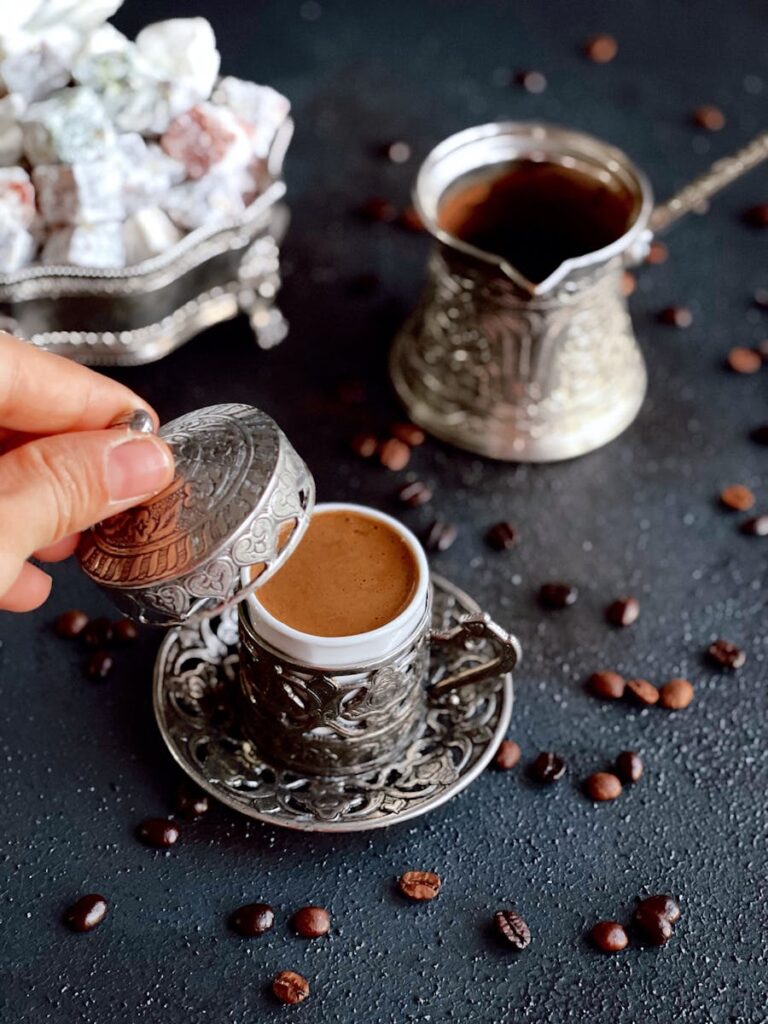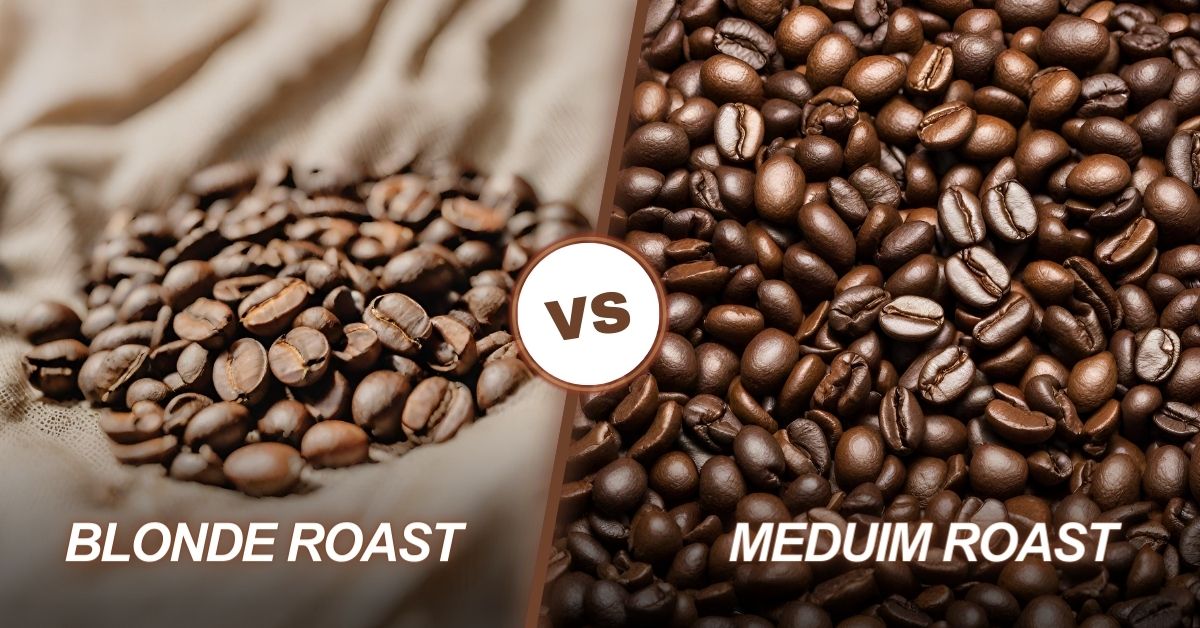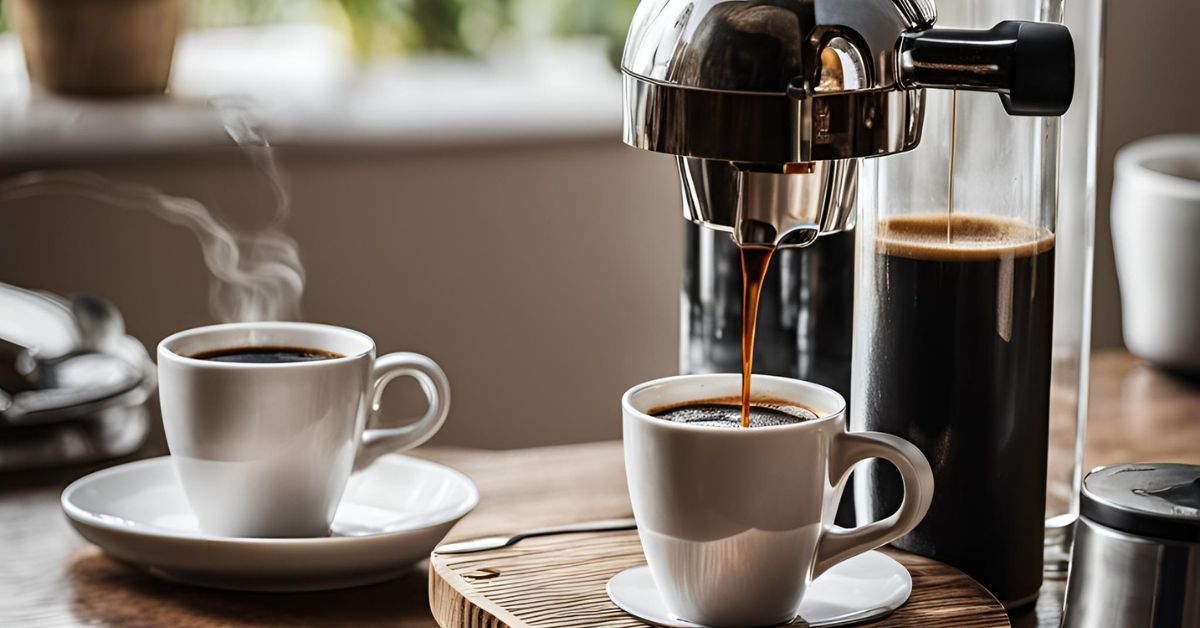Turkish Coffee vs Espresso: A Tale of Two Traditions

Coffee fanatics around the world experience a wide range of the way coffee can be organized and enjoyed, from Italian coffee to Middle Eastern Turkish espresso.
Both drinks boast a strong cultural and historical past, precise brewing techniques, and one-of-a-kind flavors that cater to unique palates and alternatives.
In this blog, we’ll dive deep into the sector of Turkish Coffee vs Espresso, comparing their histories, brewing strategies, and the enjoyment they provide to help you recognize these two iconic kinds of espresso.
Turkish Coffee:
Turkish coffee is an exclusive fashion of coffee guidance that originated inside the Ottoman Empire and has been a widespread part of Turkish and Middle Eastern lifestyles for centuries.
It is famed now not only for its robust, wealthy flavor but also for the precise method wherein it is prepared and served.

Characteristics :
- Turkish coffee uses extremely finely ground beans, more powdery than any other coffee style.
- It is brewed by slowly heating water with the coffee (and usually sugar) in a special pot called a cezve or ibrik, without filtering out the grounds.
- Served in small cups, the coffee is often accompanied by water to cleanse the palate. The grounds settle at the bottom of the cup, and drinkers usually wait a moment before sipping
- A thick, creamy foam called “kaymak” tops the coffee, signifying proper technique.
- Turkish coffee is robust and aromatic, potentially enhanced with spices like cardamom.
- It plays a significant role in social rituals and hospitality within the regions where it is popular.
- In some cultures, the grounds left after drinking are used for fortune-telling, a practice known as tasseography.
Espresso:
Espresso is a full-flavored, concentrated form of coffee that is served in “shots.” It is made by forcing pressurized hot water through very finely ground coffee beans using an espresso machine.
The result is a thicker and more highly concentrated coffee beverage with a layer of creamy foam on top, known as crema. Espresso originated in Italy in the early 20th century and has become a foundation of coffee culture worldwide, particularly in coffeehouses and cafes.

Characteristics:
- Made by way of forcing warm water via finely floored coffee beneath high stress.
- Very nice, just short of powdery, critical for correct extraction.
- Characteristic creamy, frothy layer on top, due to the excessive-strain brewing.
- Typically served in small, concentrated pictures (1-2 oz.).
- Robust and complex, frequently with a first-rate bitterness.
- Thicker and richer than everyday brewed espresso because of concentrated solids and oils.
- Quick brewing technique, best for green practice and intake.
- Originating from Italy, foundational for plenty of different espresso beverages and a staple in the worldwide coffee way of life.
Brewing Techniques: Turkish Coffee vs Espresso
Turkish Coffee:
- Grinding: The beans are floor to a very fine powder, lots finer than for coffee.
- Water and Sugar: Cold water and sugar (elective) are delivered to a cezve (conventional pot), in conjunction with the espresso grounds.
- Cooking: The combination is slowly heated over low warmness. The espresso is allowed to foam up but no longer boil, and the heat is eliminated just because the foam rises.
- Pouring: The foam is sent to a few of the cups before the rest of the coffee is poured, allowing the grounds to settle at the bottom of every cup.
Espresso:
- Grinding: Coffee beans are floor to a fine consistency, comparable to table salt.
- Tamping: The grounds are tamped down in a coffee gadget’s portafilter to ensure even water distribution.
- Brewing: High pressure is used to pressure warm water via the grounds, extracting the coffee fast and growing a creamy pinnacle layer referred to as crema.
- Serving: Espresso is served without delay to preserve its flavors and aromas.
Turkish Coffee vs Espresso: Comparison
Turkish Coffee and Espresso may be coffee, but the way they are brewed and consumed could not be more different. Here’s how:
| Feature | Turkish Coffee | Espresso |
| Brewing Method | Boiled in a cezve with grounds remaining in the cup | Pressurized hot water through fine grounds |
| Flavor | Strong, bold, may include spices | Highly concentrated, variable flavors |
| Texture | Gritty due to fine grounds | Smooth with a creamy crema on top |
| Serving Size | Small cups, usually fuller | Small shots (1-2 ounces) |
| Caffeine Content | Moderate, varies with volume | High per ounce, due to concentration |
| Cultural Significance | Part of social rituals, ceremonial | Integral to daily life, quick consumption |
| Equipment Needed | Cezve (a special pot) | Espresso machine |
| Consumption Style | Sipped slowly, often socially | Consumed quickly, often standing |
Equipment Essentials of Brewing Turkish Coffee and Espresso:
When it comes to brewing espresso, the strategies, devices, and skills involved can appreciably affect the flavor and taste of your drink.
Turkish coffee vs espresso, esteemed staples within the international of coffee, require unique gear and strategies to create their one-of-a-kind tastes. Here’s an in-depth examine the gadgets and skills needed to master each.

Turkish Coffee:
- Cezve/Ibrik: The maximum essential tool for making Turkish espresso is the cezve (also referred to as ibrik), a small, commonly copper or brass pot with an extended take care of. Its slender top is important for the froth that functions as a terrific Turkish coffee.
- Coffee Mill: An exceptional grind is vital for Turkish coffee, finer than what is used for espresso. Many enthusiasts use a specialized Turkish coffee grinder which can grind the beans to a powder-like consistency.
Espresso:
- Espresso Machine: The cornerstone of making espresso, these machines are available in numerous types from guide to semi-automatic and fully computerized. High-great machines are generally products of components that can take care of excessive stress and temperature stability.
- Coffee Grinder: An espresso grinder needs to produce a completely steady high-quality grind. The granularity of the coffee is essential, as inconsistent sizes can cause terrible extraction.
- Tamp: After grinding, tamping the espresso is critical. This includes pressing the coffee grounds into the portafilter with a tamper and compacting the espresso to ensure even water distribution for the duration of extraction.
FAQs:
Is Turkish coffee more potent than coffee?
Turkish espresso has a caffeine awareness of 30-32 mg consistent with ounces. Contrarily, every shot of Espresso consists of 30-35 mg.
The espresso coffee’s caffeine concentration rises as extra pictures are introduced. In this situation, Espresso has more caffeine than Turkish coffee, indicating a more potent coffee between them.
What is so unique about Turkish espresso?
The area of expertise of this espresso lies no longer in the sort of bean used but in its extraordinary brewing technique.
In preparing this coffee, the beans are floor to an extremely excellent powder, a good deal finer than that used for espresso. This consequences in a brew that is much less focused but rich in flavor
Is Turkish coffee healthier than regular coffee?
Turkish coffee is not filtered and may contain higher concentrations of beneficial bioactive compounds, such as chlorogenic acids, health-promoting antioxidants, and polyphenols.
Chlorogenic acids can improve inflammation and blood sugar, cholesterol, and high blood pressure levels
Which coffee is stronger than espresso?
Ristretto is a stronger and sweeter coffee drink than espresso: The first part of any extraction is the most concentrated, leading to a different balance of tastes and aromas.
It contains fewer chemical compounds overall than longer extraction: This leads to a different balance of tastes and aromas.
Conclusion:
Turkish coffee Vs espresso is famous for a captivating glimpse into how one-of-a-kind cultures method coffee, each with precise brewing techniques, flavors, and roles inside society.
Even as both Turkish espresso and coffee provide wealthy and extreme coffee stories, they cater to extraordinary cultural options and moments.
Turkish coffee is set playing the instant at a slower pace and savoring the richness of existence, while espresso provides a quick, vibrant burst of strength that aligns with the dynamic rhythm of contemporary existence.
Each style represents its cultural heritage proudly, supplying espresso fans around the world with a taste of records in each cup.
Reference:
https://wolfewithane.com/espresso-vs-turkish-which-is-stronger




